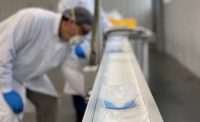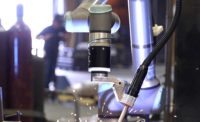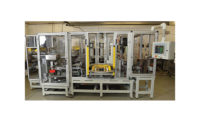To make the most of renewable energy sources, such as wind and solar, utilities must overcome the problem of intermittency. When the sun isn’t shining or the wind isn’t blowing, energy is not being generated. Moreover, the energy grid was designed to accept the constant, predictable output of fuel-burning power plants—not the sharp rise and fall produced by solar panels at dawn and dusk.
To solve this problem, utilities need low-cost, large-scale, long-duration energy storage systems that bank energy when it’s being generated and provide energy when it’s needed. Now, energy start-up ESS Inc. of Wilsonville, OR, has developed a new technology that promises to meet that need. The company’s iron-flow battery systems—the Energy Warehouse and the Energy Center—are designed to meet the energy needs of customers ranging from small industrial facilities to large, utility-scale projects.
The batteries rely on a mixture of iron and saltwater to store energy for hours longer than lithium-ion batteries. During the charging cycle, iron that is saturated in the saltwater electrolyte is deposited on the negative electrode. To discharge the battery, the polarity is reversed, and the iron dissolves back into the saltwater solution. By carefully managing this process, the iron-flow battery is able to achieve a significantly longer battery life of 20,000 cycles or more, compared to 3,000 to 4,000 cycles for lithium-ion batteries, without degrading over time.
Compared with other energy storage technologies, iron-flow batteries are cleaner, safer, more environmentally sustainable, and more economical. They are also fully recyclable. Unlike typical batteries that are packaged as fixed cells or modules, a flow battery allows the power (the rate of electricity flow) to be decoupled from the capacity (the total amount of energy held). As a result, facilities have the flexibility to use the batteries for a variety of applications.
The Energy Warehouse is built inside a standard 40-foot shipping container for easy transport and commissioning. It provides six to 12 hours of storage, with a nominal power of 75 kilowatts (kW), a peak energy capacity of 500 kilowatt-hours (kWh) and a rated energy capacity of 400 kWh.
The system does not require cooling or air-conditioning, even in desert environments. The low-maintenance system can provide more than 20,000 cycles with no capacity fade throughout its 25-year design life. That makes it ideal for renewable energy and utility projects needing long life and unlimited cycling capability. In addition, the system’s quick-response power electronics can perform ancillary grid services, such as voltage and frequency support on microgrids.
The Energy Center is larger. Designed for independent power producers and utility-scale projects, the Energy Center has the same iron-flow battery modules as the Energy Warehouse—just more of them. The batteries are housed in a building rather than a shipping container, so users can customize an energy storage system to meet their exact needs.
ESS’s technology is already gaining interest around the world. For instance, the company is working on a project with Coldwell Solar, a major developer of renewable energy projects for California’s commercial, agricultural and utility sectors. The storage units will be integrated into solar energy systems at three wineries in Mendocino County.
ESS has also delivered an Energy Warehouse to Amsterdam Airport Schiphol in The Netherlands, the second largest airport in mainland Europe. The system is being used in a pilot project to demonstrate the feasibility of retiring diesel generators at the airport, which supply electrical power to parked aircraft.
And, last fall, ESS was selected by Consumers Energy, Michigan’s largest energy provider, to provide an Energy Warehouse for a solar energy system at a gas compression facility. Consumers Energy provides natural gas and electricity to two thirds of Michigan’s 10 million residents. The project will help the utility achieve goals laid out in the Energy Storage Roadmap for Michigan. Released in April 2022 by the Michigan Department of Environment, Great Lakes and Energy, the roadmap calls for 1,000 megawatts (MW) of energy storage by 2025 and 4,000 MW by 2040.
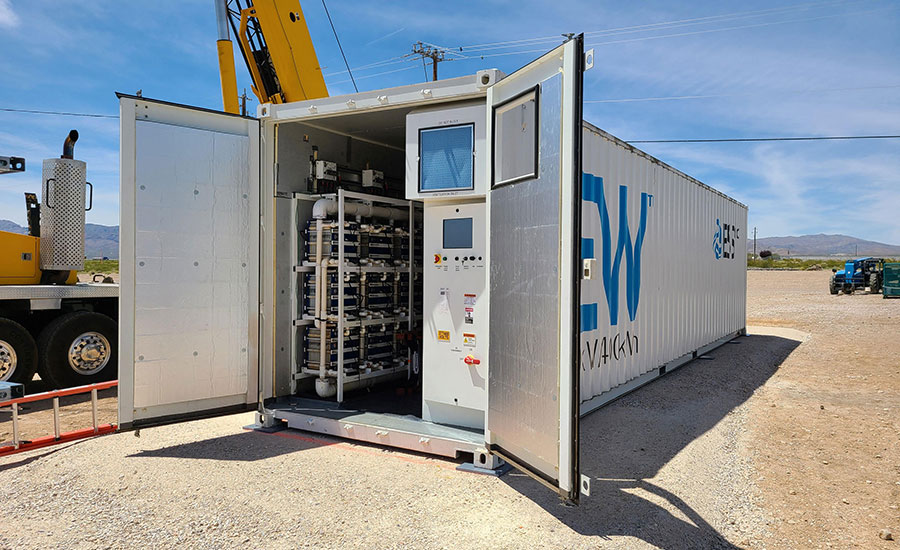
The Energy Warehouse is built inside a standard 40-foot shipping container. It provides six to 12 hours of storage, with a nominal power of 75 kW and a peak energy capacity of 500 kWh. Photo courtesy ESS Inc.
Better Batteries by Design
To meet growing demand for its products, ESS has worked hard to boost output, starting with improving product design.
Early versions of the company’s battery stack were assembled manually. “The bolts were tightened manually. The wiring was done manually,” recalls Eric Dresselhuys, CEO of ESS.
Years of R&D and field testing eventually yielded a battery design that was not just more powerful, but also cleaner and easier to produce. “Our S200 design is a 50 kWh battery. It’s a welded design—much more manufacturable, much more durable,” says Dresselhuys.
A similar evolution occurred with the other key component of the iron-flow battery, the proton pump.
“The proton pump keeps the electrolytes in the system balanced. That allows effectively unlimited cycling of the unit, ensuring that the electrolyte is clean and clear and balanced for storing electricity,” explains Dresselhuys. “The original unit was manually built. It had a lot of connections. The second generation design is much cleaner with fewer connections. Everything is welded. It has a smaller footprint. it costs less, and it’s more reliable.”
Another example of how ESS improved design and quality is with wiring. In the past, assemblers would manually connect hundreds of wire ends, point by point. “Now, we’ve consolidated all that into one harness that can be hooked up very quickly,” says Vince Canino, chief operating officer of ESS. “We affectionately call it the ‘octopus harness,’ because of all its tentacles. It has improved the reliability and quality of our builds, and it has reduced the amount of labor.”
To facilitate communication, design engineers and manufacturing engineers work together on the shop floor. “I don’t want anyone wondering, ‘why did he put that bolt hole there?’” says Canino.
The company has also benefited by developing collaborative relationships with suppliers. For example, the company worked with injection molding vendors to develop large, intricate plastic parts with precise tolerances.
“Our suppliers are in business with us. We help them, and they help us. It’s not about squeezing a bunch of cost out,” says Canino.
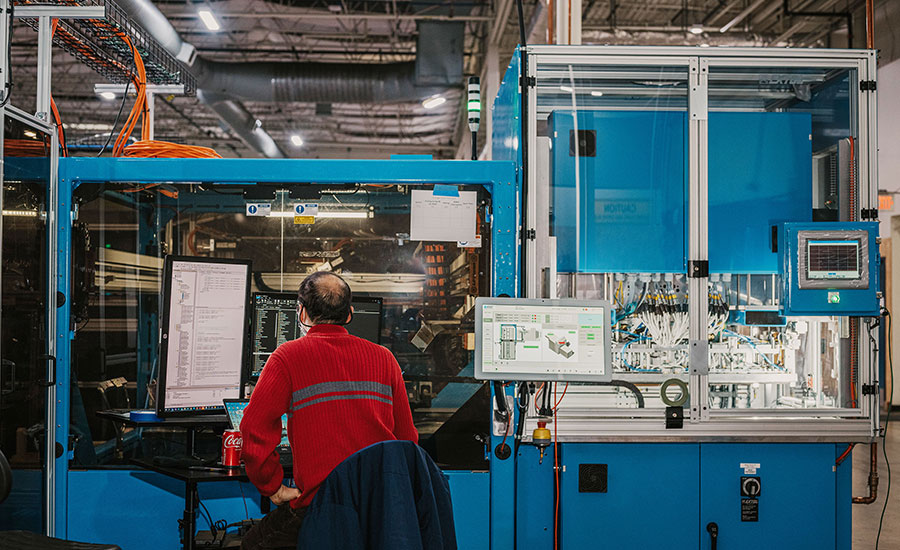
Software monitors every aspect of the automated assembly process. Photo courtesy ESS Inc.
Getting Lean
Another way the company has boosted throughput is by implementing lean manufacturing. When Canino joined ESS in November 2022, the company was applying lean, “but it wasn’t in our DNA,” he admits.
So, Canino hired a leader to make lean part of the corporate culture, from the shop floor to commissioning systems in the field. “Finding and eliminating waste isn’t just a process that is taught—it’s a way of thinking,” Canino says. “We have worked to eliminate days, then hours, and then seconds out of every step of our manufacturing processes to allow our people to focus on just those steps that add value.
“Lean is not rocket science, but when you’re building something new, you’d be surprised at how much you need to get back to basics,” he adds.
Today, ESS is well along on its lean journey. Visual management is evident throughout the factory. Dashboards and progress meters communicate production metrics for all to see. Kanbans govern parts replenishment. A “moonshine shop” tests worker suggestions for improvement.
ESS started by applying the principles of 5S. For example, the company reorganized its warehouse to streamline the process of picking parts for the production floor. This saved hours of time for workers by reducing the need to search for parts. Workstations were organized with boards that only hold the tools needed at that station. Outlines on the boards indicate where the tools should be kept, ensuring that technicians can quickly find what is needed and identify missing tools.
To the 5S principles at the core of lean, ESS added a sixth S—safety. “Safety is central to everything we do and is complementary to lean,” says Canino. “Improving and standardizing practices is one of the best ways to ensure a safe and predictable work environment.”
A safety dashboard is front and center in the lobby of the company’s headquarters, to remind visitors and employees alike of the importance of safety. “The moment you think, ‘this isn’t dangerous,’ that’s when injuries get you,” Canino says.
A similar 5S transformation took place at the back of the factory, where workers install batteries, tanks, pumps, electronics and other subassemblies inside the shipping containers that are to become Energy Warehouses. In the past, subassemblies were simply deposited near the dock doors wherever there was space.
“There was no rhyme or reason to how the area was organized,” Canino remembers. “Workers spent a lot of time looking for stuff.”
After a healthy dose of lean, the area is much better. “Just that exercise alone took days out the manufacturing process,” Canino says.
At some point, Canino hopes to do final integration of the shipping containers on a moving assembly line, instead of one by one at loading bays at the back of the factory. But for now, he’s pleased with the company’s progress.
“If you could see a before and after picture, the transformation is amazing. Our workers feel so much better. They’ve got pep in their step,” he says.
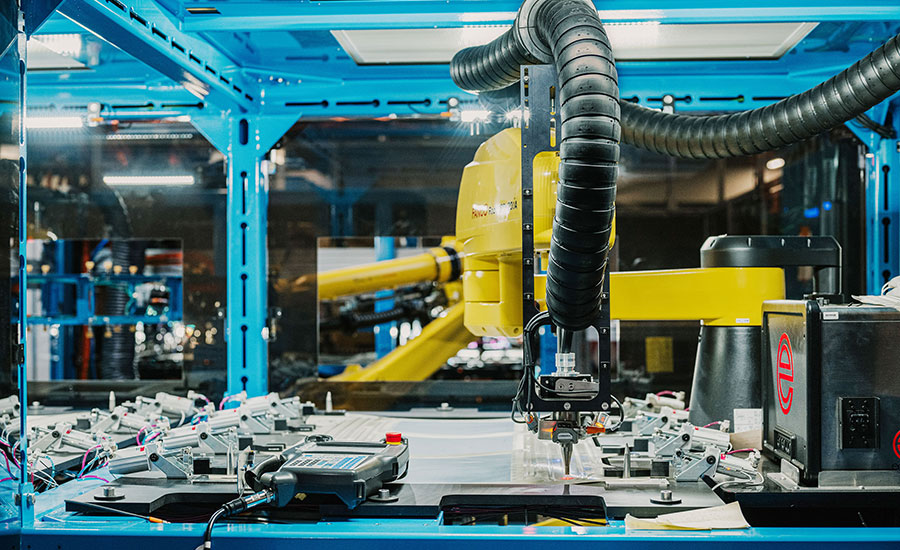
A laser welds metal parts for a battery. Photo courtesy ESS Inc.
Automating Assembly
Initially, ESS assembled products manually. As volumes grew, it implemented a semiautomatic assembly line. Workers manually assembled the stacks of materials that made up the positive and negative electrodes of the battery. Those stacks would then be handed off to robots to ensure that the seal between all the layers is done with great precision. Even on the semiautomatic line, control software is used to reduce idle time and improve utilization of key equipment.
In December 2022, the company hit the start button a new, fully automated assembly line. Robots now ensure electrodes are precisely placed in every module. Lasers weld key parts quickly and precisely. Vision systems every part is in place. At the end of the line, completed battery stacks are put through thermal and pressure testing.
“It’s a much more efficient, much less labor-intensive manufacturing process,” says Dresselhuys. “The bolting, dispensing, soldering, pressure testing...are all done in-line. This has had a dramatic impact, improving our labor productivity by three times and ensuring that we get great quality off the end of the line.”
“As we were developing the automation, we were also enhancing our product designs,” adds Canino. “But that’s only natural with an emerging technology like this.”
Thanks to automation, ESS built more units in the fourth quarter of 2022 than in the entire preceding year. The company can now produce more than 800 MWh of energy storage per year.
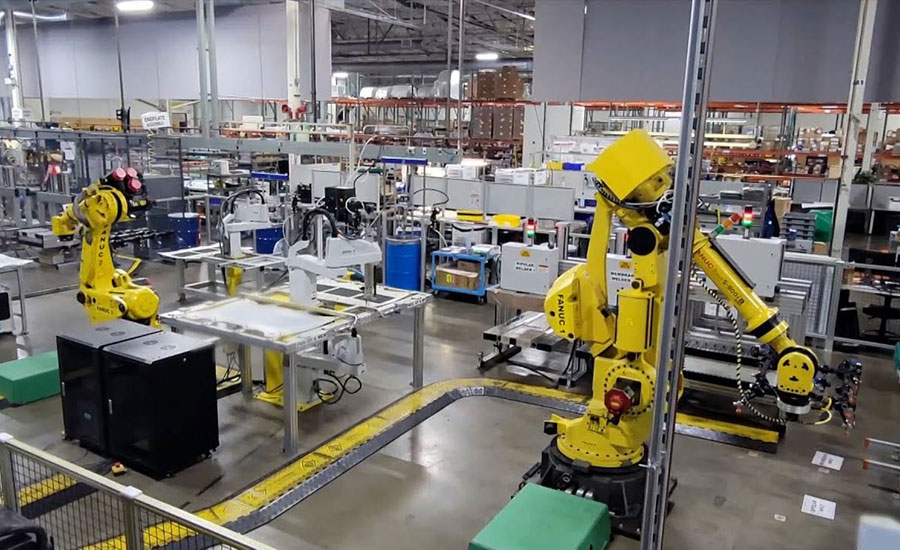
Automation has improved productivity at ESS by a factor of three. Photo courtesy ESS Inc.
ASSEMBLY ONLINE
For more information on battery manufacturing, read these articles:
Ultrasonic Welding of Copper Foils for EV Battery Assembly
JOT Helps Battery Manufacturer Automate Assembly
Water Could Help EV Batteries Get More Power


